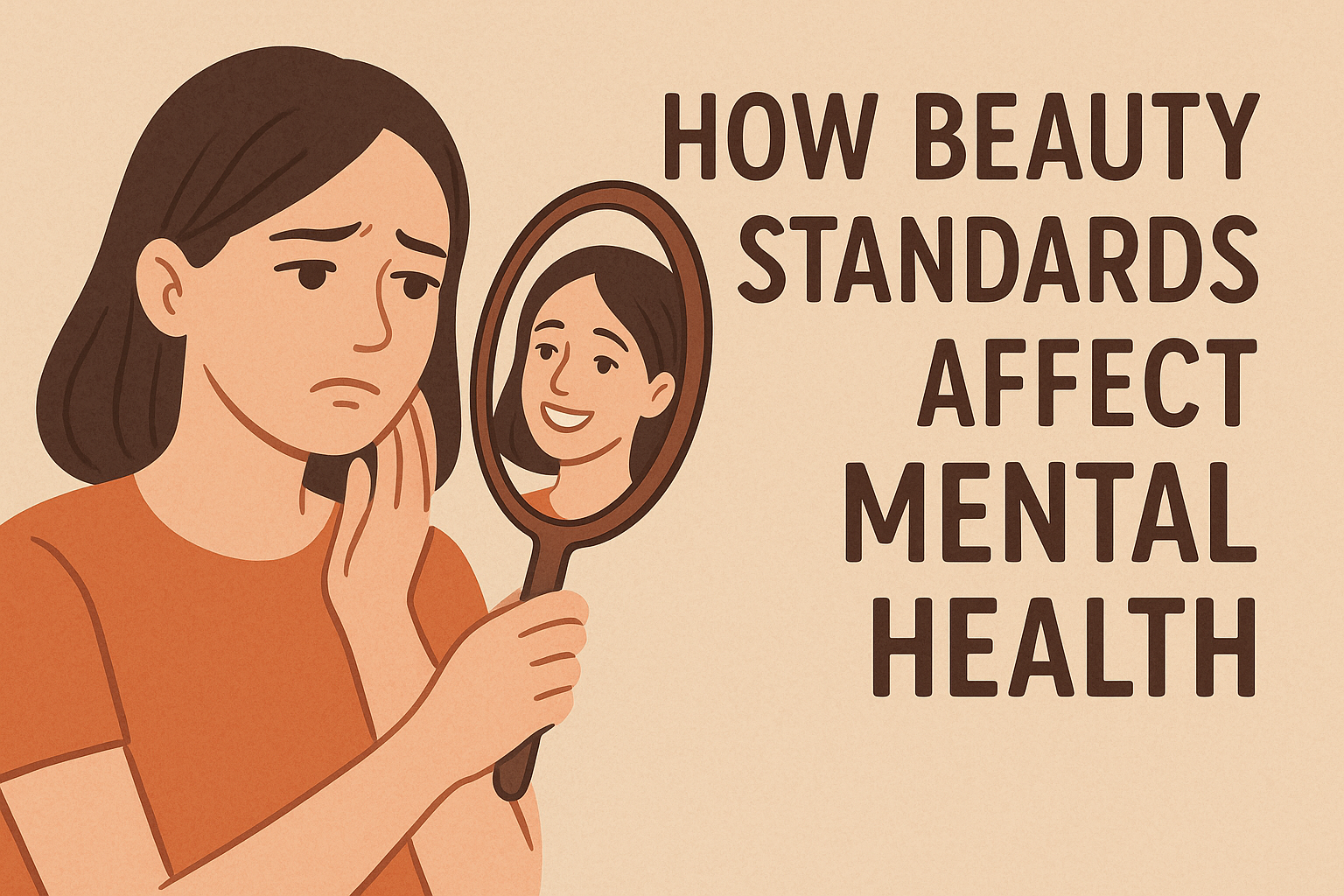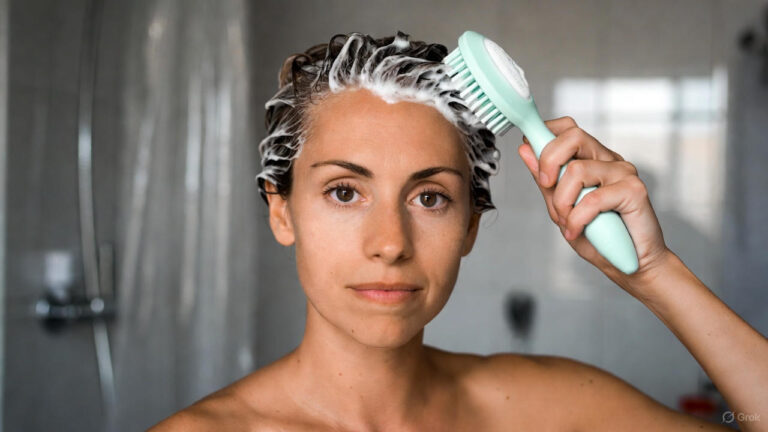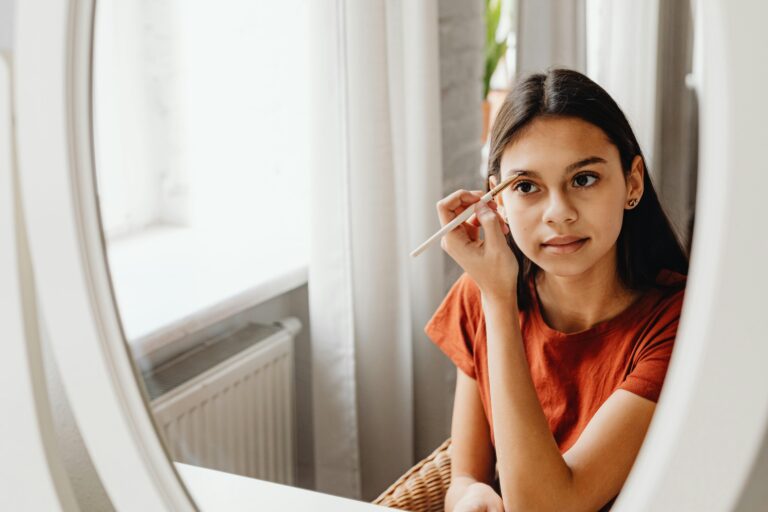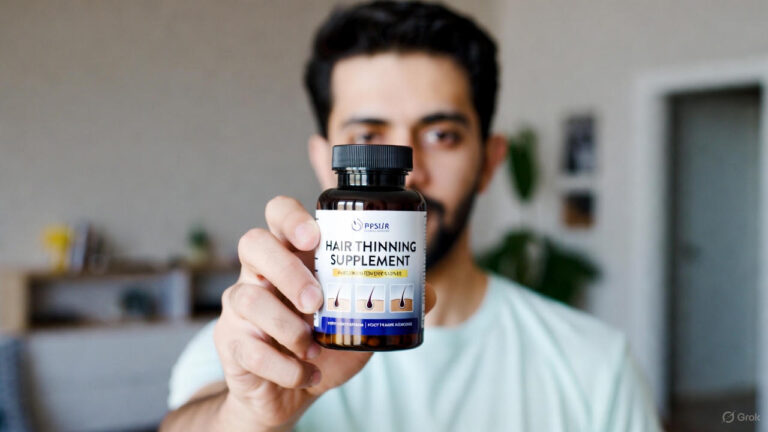You’ve seen it everywhere: magazines, social media, even the ads before a YouTube video. Perfect hair, glowing skin, flawless bodies. It’s everywhere, and honestly, it’s hard not to compare yourself sometimes. Beauty standards can feel like a silent pressure, quietly shaping how you see yourself every day. But here’s the thing: they don’t just change how you look at a mirror. They can change how you feel inside.
Let’s break this down together, piece by piece, with a human lens, no fluff, just the real impact these ideals have on mental health.
The History Behind Beauty Standards
Beauty ideals have been around forever. Ancient cultures celebrated different features. In some eras, fuller figures symbolized wealth and fertility. In others, slim silhouettes became the trend.
Today’s standards are more global and more visible thanks to the internet. Instead of just your town or culture setting the tone, you see a mash-up of expectations from everywhere at once.
Here’s the tricky part. These ideals shift quickly. One year, natural brows are in. The next, sculpted arches. Your mental health struggles to keep up with something that’s always changing. It’s like chasing a moving target.
How Beauty Standards Affect Mental Health- The Mental Toll of Comparison
Ever scroll through Instagram and feel worse about yourself after? That’s not in your head. Social comparison is a real psychological phenomenon. You see someone with “perfect” skin or body and think less of yourself.
It chips away at self-esteem bit by bit. You start thinking you’re not enough. Over time, that constant low-level stress can lead to anxiety, depression, and even body dysmorphic disorder, where you obsess over perceived flaws.
Pro tip: Most of those “perfect” images are edited or staged. But knowing that doesn’t always stop the emotional hit, right?
Social Media’s Double-Edged Sword
Social media isn’t all bad. It’s where people find community, share tips, and celebrate diversity. But the flip side is rough. Filters, angles, and paid promotions create a fantasy loop.
You compare your behind-the-scenes to someone else’s highlight reel. That can make your brain feel like it’s always losing. Plus, algorithms push what’s popular, not what’s real, so extreme looks dominate your feed.
Some platforms are trying to address this with warnings on edited photos, but honestly, it’s just the start.
Pressure on Different Genders
Women often face pressure to stay youthful, slim, and polished. Men get pushed toward muscularity, height, and strength. Nonbinary individuals deal with the added stress of fitting into or rejecting traditional beauty roles.
Each group carries its own invisible weight. These pressures intersect with race, culture, and age too. For example, Eurocentric beauty ideals often overshadow other cultural features, leading to a sense of erasure or not belonging.
Eating Disorders and Risky Behaviors
The pursuit of an “ideal” body isn’t just stressful. It can turn dangerous. Eating disorders like anorexia or bulimia often link directly to body dissatisfaction fueled by these standards.
Others turn to excessive workouts, risky cosmetic procedures, or unregulated supplements. All of these carry real health risks. Your mental health takes a hit first, but your physical health can follow close behind.
The Role of the Beauty Industry
Cosmetics, skincare, fitness programs—they’re not inherently bad. They can be fun, empowering even. The problem starts when marketing leans on insecurity.
You’re told, “You’ll look better with this.” Better often translates to closer to an unrealistic ideal. Over time, that messaging starts to feel like truth.
In most cases, the products themselves aren’t harmful. The story behind them—the subtle suggestion that you need fixing—does the real damage.
Cultural Shifts Toward Inclusivity
Here’s a bit of good news. There’s growing pushback. More brands show models of different sizes, skin tones, and abilities. Campaigns celebrate natural hair, stretch marks, and aging.
This matters. When people see themselves represented, mental health improves. Self-acceptance gets a boost. The problem isn’t solved, but at least the conversation is happening.
Coping and Building Resilience
You can’t control the entire media landscape, but you can shape your bubble a bit. Here are a few steps:
- Curate your feed. Follow accounts that celebrate real bodies and diversity.
- Talk it out. Therapists, friends, or support groups can help you untangle self-worth from appearance.
- Challenge thoughts. When you catch yourself thinking, “I’m not pretty enough,” pause. Ask, “Says who? Based on what?”
Small shifts add up. You don’t erase pressure overnight, but you build mental muscles to push back.
The Bigger Picture: Systemic Change
Individual coping matters, but let’s be honest, the system needs fixing too. Media companies, advertisers, and influencers hold huge power. Responsible messaging can literally save lives.
Schools can teach media literacy so kids grow up knowing filters aren’t reality. Governments can regulate misleading ads. And as consumers, you vote with your wallet—brands notice when you support authenticity.
Conclusion
Beauty standards aren’t just about looks. They shape how people feel, how they act, and even how they treat themselves. The impact on mental health is deep but not permanent. Change is happening slowly, and with every conversation, it speeds up.
Your worth isn’t tied to a trend. It never was.
FAQs
1. What are beauty standards?
Beauty standards are cultural ideas about what makes someone attractive. They shift over time and often depend on social trends, media, and historical context.
2. How do beauty standards cause anxiety?
Constant exposure to unrealistic images can trigger self-comparison. Over time, this stress can grow into anxiety about appearance or social acceptance.
3. Are men affected by beauty standards too?
Yes. Men face pressure to look muscular, tall, or “masculine” in specific ways. This can lead to body dissatisfaction and risky behaviors, just like with women.
Usually, yes. Following accounts that promote body positivity or diverse beauty helps reduce harmful comparison. It’s like cleaning up mental clutter.
5. Are beauty standards improving worldwide?
Slowly. More brands and media outlets are embracing diversity. But some harmful ideals still dominate. Progress takes both cultural and individual effort.



